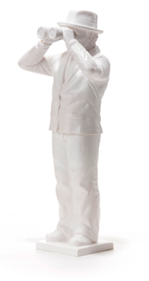
Ihr Warenkorb ist leer.


Ihr Warenkorb ist leer.

Used as a mobile home, recreation vehicle, or sales booth, the caravan symbolises a modern way of travelling just as travels are undertaken by caravans, i.e. companies of travellers on a journey, in Asia or Africa for purposes of trade or exploration.
Moreover, the caravan as a system fulfils the idea of autonomous architecture: it is an independent structural unit with no permanent connection to the ground. It therefore frequently serves as an element of constructivist and metabolist architecture, as a standardised cell or dwelling capsule within buildings or urban organisms, its spatial dynamism being considered an architectural equivalent to the complex correlations between man, growth, and transformation. Replacing the mechanistic principle by an act of material integration alters the way we perceive space. The ubiquity and simultaneous availability of the new medium seem to remove spatial distance. At the same time, abstract space develops in addition to material space.
The installation translates this development into a sculptural act. The caravan as a model of a form of human action is separated from its visual appearance and function. As an object and as space, it is deconstructed into fragmentary units and reorganised into a new system. Such methodical transformation of its substance is a metaphor in terms of form and content of the alterable reality of space perceived.
Formalhaut, 1987